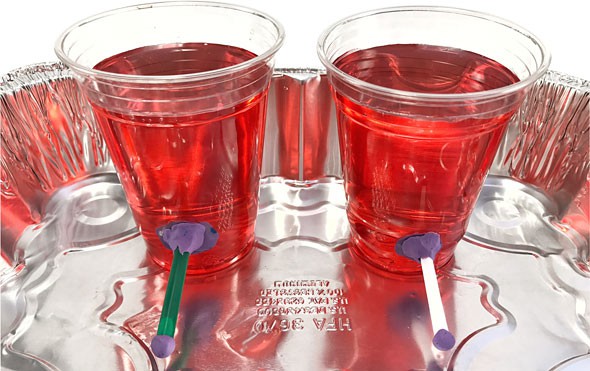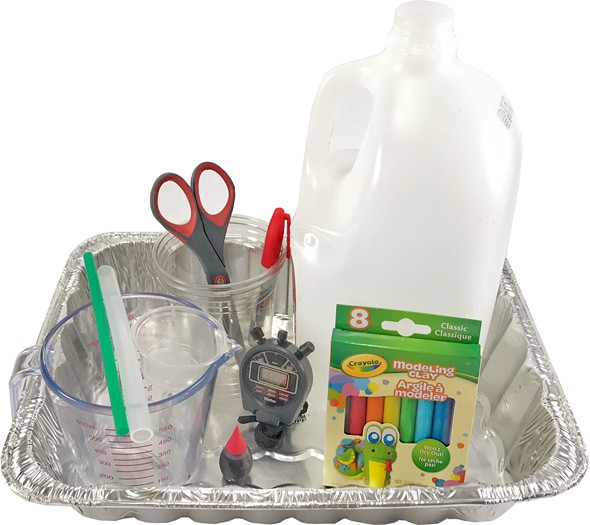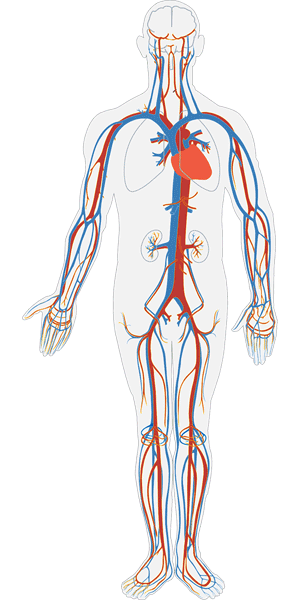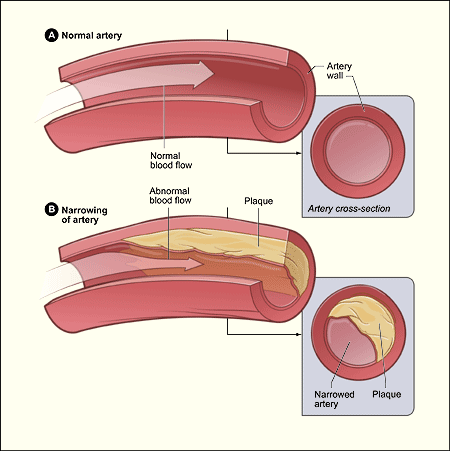Modeling Blood Flow
Summary

Overview
Why is it important to eat healthy and exercise? In this hands-on lesson plan, students will build a simple model to explore the effects of plaque buildup in arteries. The model allows them to demonstrate what happens to blood flow when heart disease narrows a person's arteries.Learning Objectives
- Explain why our circulatory system (including the arteries and blood) is essential for our survival
- Describe the cause and effect of obstructed blood flow through plaque buildup in the arteries
- Assess flow rates of liquids using a blood flow model
NGSS Alignment
This lesson helps students prepare for these Next Generation Science Standards Performance Expectations:- 4-LS1-1. Construct an argument that plants and animals have internal and external structures that function to support survival, growth, behavior, and reproduction.
|
Science & Engineering Practices
Asking Questions and Defining Problems.
Ask questions about what would happen if a variable was changed.
Developing and Using Models. Develop and/or use models to describe and/or predict phenomena. Use a model to test cause and effect relationships or interactions concerning the functioning of a natural or designed system. Planning and Carrying Out Investigations. Make predictions about what would happen if a variable changed. Engaging in Argument from Evidence. Use data to evaluate claims about cause and effect. |
Disciplinary Core Ideas
LS1.A: Structure and Function.
Plants and animals have both internal and external structures that serve various functions in growth, survival, behavior, and reproduction.
|
Crosscutting Concepts
Cause and Effect.
Cause and effect relationships are routinely identified, tested, and used to explain change.
System and System Models. A system can be described in terms of its components and their interactions. |
Materials
 Image Credit: Svenja Lohner, Science Buddies / Science Buddies
Image Credit: Svenja Lohner, Science Buddies / Science Buddies
Materials for teacher preparation:
- Scissors (1)
- Water (enough to fill 2 cups per group)
- Measuring cup
- Pitcher or container for storing the water, or access to a sink
- Masking tape or permanent marker
- Optional: red food coloring
Materials per group of 2–4 students:
- Plastic cups, 16 oz. (3)
- Two straws with different diameters (a 2-inch piece of each)
- Modeling clay
- Stopwatch
- Aluminum tray (big enough to fit 500 mL of water)
Background Information for Teachers
This section contains a quick review for teachers of the science and concepts covered in this lesson.To be healthy, every part of the human body needs to be supplied with oxygen and nutrients. The job of blood is to transport oxygen and nutrients by traveling through the body's circulatory system, also called the cardiovascular system (heart, veins, and arteries) and delivering them to the other parts of the body as shown in Figure 1. The heart acts as a powerful pump that generates the force necessary to move the blood around the circulatory system. When something goes wrong with the body's circulatory system, it can lead to serious health consequences, including death.
 Image Credit: Pixabay / Public Domain
Image Credit: Pixabay / Public Domain
Figure 1. The circulatory system of the human body.
The most common problem with the circulatory system is coronary heart disease, also called coronary artery disease. Coronary heart disease is caused by the buildup of cholesterol and other material, called plaque, in the arteries: the blood vessels that carry oxygenated blood from the heart to the organs. This buildup is known as atherosclerosis. Over time, as the plaque grows thicker, the arteries become narrower, as shown in Figure 2. As the arteries narrow, they cannot carry as much blood to the organs. The decrease in oxygenated blood can lead to chest pains and heart attacks. The plaque sometimes becomes dislodged and forms blood clots that block the blood flow, which can also cause heart attacks and strokes.
 Image Credit: Wikimedia commons, User: EhJJ / Public Domain
Image Credit: Wikimedia commons, User: EhJJ / Public Domain
Figure 2. Coronary heart disease can be caused by the buildup of plaque inside the arteries, which narrows their diameter and affects blood flow through our body.
In this lesson plan, students model what happens to blood flow when coronary heart disease narrows a person's arteries by comparing the flow of water (blood) through straws (arteries) of different diameters. The activity is also a great starting point for a variety of health discussions in the classroom.



